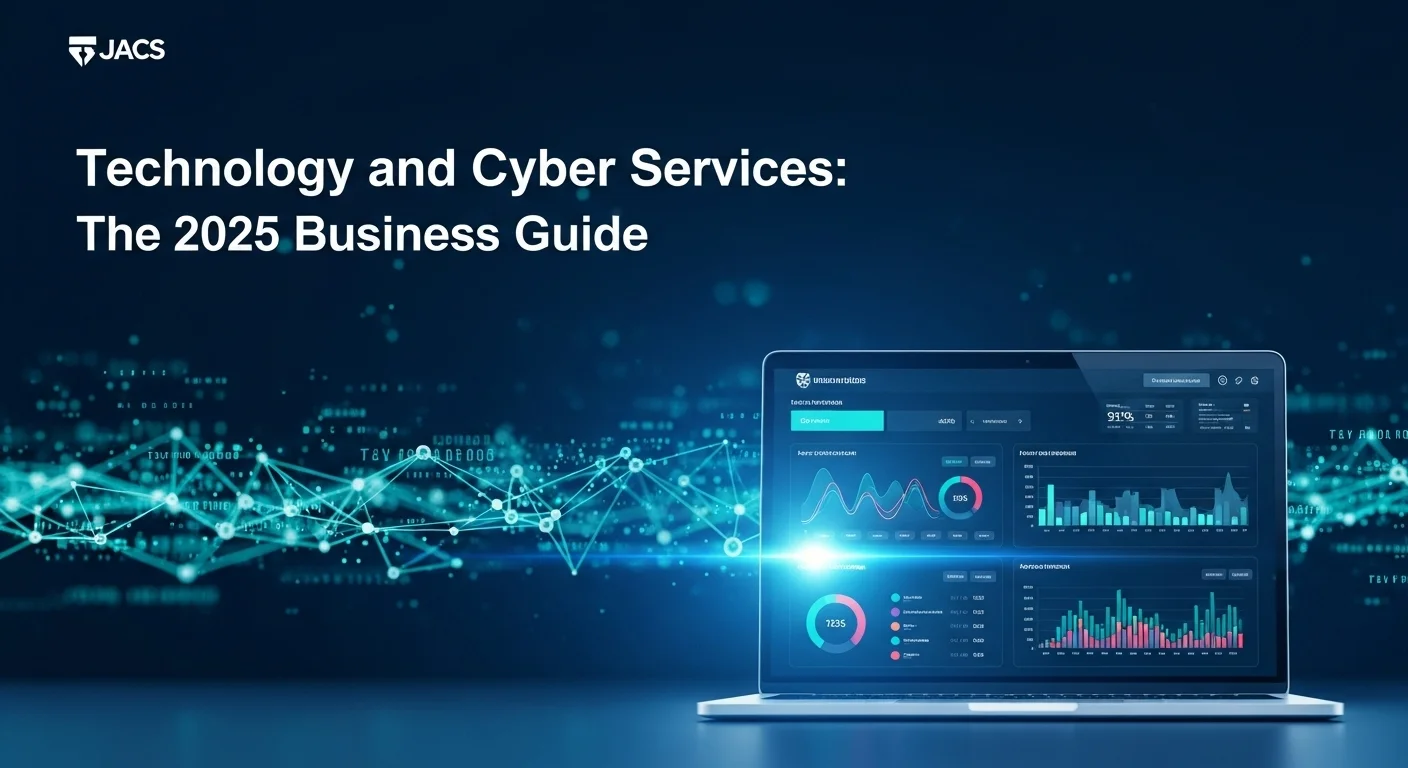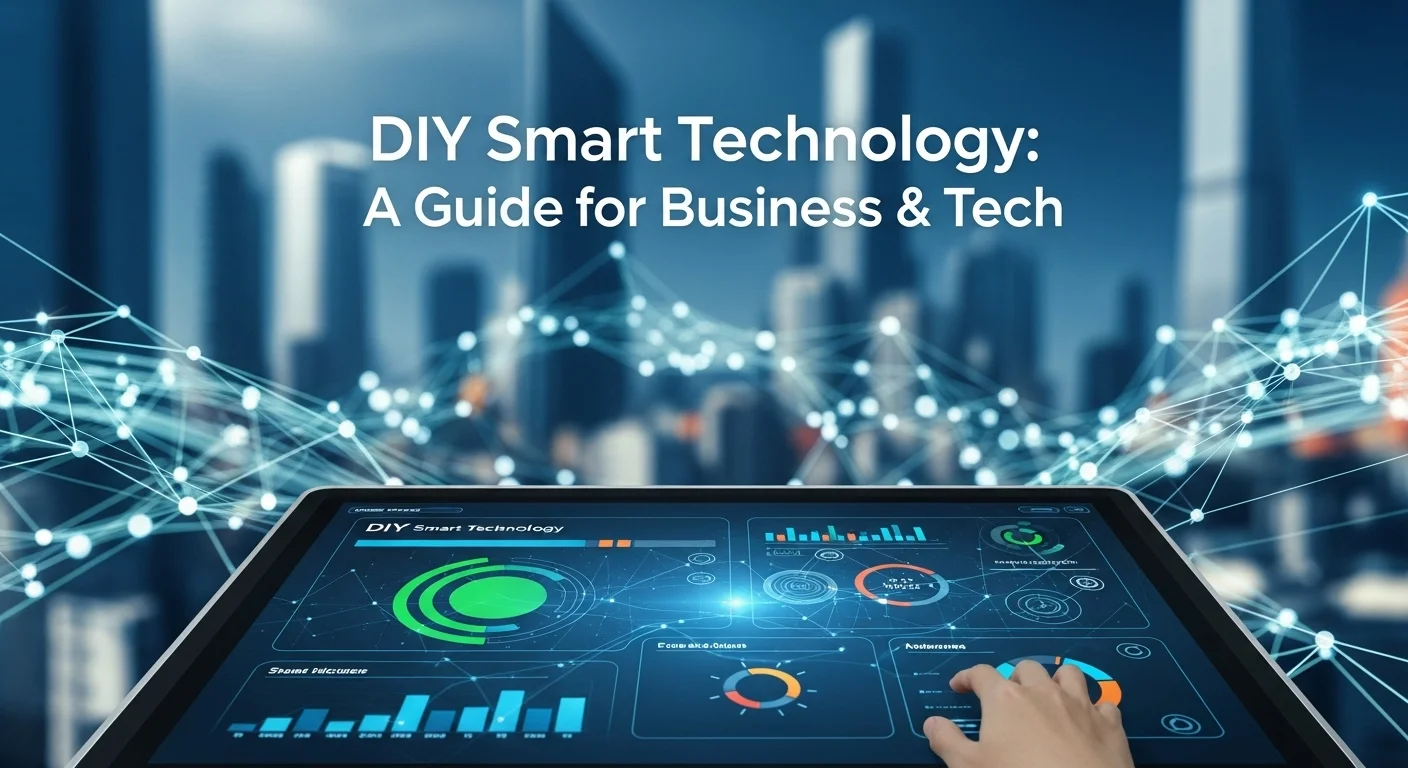Your 2025 Guide to Cyber Services: Protecting Your Business in the Digital Age

Executive Summary
In my years of navigating the digital world, I've seen one thing become crystal clear: our reliance on technology is a double-edged sword. It drives incredible growth, but it also opens the door to serious cyber threats. This guide is my attempt to demystify 'Cyber Services' for you. Think of it as your roadmap to building a digital fortress. We'll walk through everything, from proactive services that hunt for threats before they strike, to the emergency response teams you need when a breach happens. We'll explore flexible 'Cyber as a Service' (CaaS) models that give you top-tier expertise without the massive cost of an in-house team, and I'll explain how managed services can act as your 24/7 digital security guard. This isn't just for tech gurus; it's for any business leader who wants to stop worrying about digital threats and start focusing on growth. Let’s be honest, having a solid cyber strategy isn't just a good idea anymore—it's essential for survival.
Table of Contents
Table of Contents
What are Cyber Services and Why Do They Matter?
In today's business world, where nearly everything we do is online, I often get asked, "What exactly are 'Cyber Services'?" It sounds like complex tech jargon, but the concept is actually quite simple. Think of your business's digital presence—your website, your data, your customer information—as your property. Cyber services are the specialized team of professionals you hire to protect that property. It’s not just one alarm system; it's a complete security detail, from guards patrolling the perimeter to detectives investigating threats and a crisis team ready to act if someone breaks in. In an age where a single data breach can destroy a company's reputation and cost millions, you can see why this has become a boardroom conversation, not just an IT one. We've moved past the old 'if it breaks, we'll fix it' mentality. The reality is, hackers and malware are knocking on the door every single day. A proactive, strategic defense isn't a luxury; it's a fundamental business requirement.
So why are these services so critical? First, they give you access to expertise that's incredibly hard to find and expensive to hire yourself. I've seen companies struggle for months to fill a single cybersecurity role. The talent gap is real. Service providers give you a whole team of experts who live and breathe this stuff. Second, they help you navigate the confusing web of regulations like GDPR or HIPAA. Let's face it, nobody wants to get hit with massive fines for non-compliance. These services ensure you're ticking the right boxes. But most importantly, they build resilience. I've been in the trenches during a major cyber incident, and I can tell you, it can bring a business to its knees. A solid security strategy, with a clear plan for when things go wrong, means you can recover faster, minimize damage, and protect the trust you've built with your customers.
Breaking Down the Core Components of Cyber Services
To really get a feel for this, let's break down the main pillars that hold up a strong security strategy. They all work together to create layers of defense.
First up is what I call the early warning system: cyber threat intelligence services. This is the proactive part. It's about gathering information from all over—the dark web, security forums, global threat feeds—to figure out who might attack you, and how. This isn't just raw data; it's converted into actionable intelligence. For example, it can tell you, "A group known for targeting retail companies is using a new phishing scam. Here's what it looks like." With that knowledge, you can warn your team and patch your vulnerabilities before the attack even happens. It's about shifting from being a sitting duck to actively anticipating the enemy's next move.
On the flip side, you have your emergency team: cyber incident response services. Because let's be realistic, no defense is 100% foolproof. Breaches happen. When they do, you need a calm, experienced team to manage the chaos. Their job is to contain the damage immediately—like isolating an infected laptop from the network—and then methodically eradicate the threat, recover your systems, and figure out how it happened so it won't happen again. Having an incident response team on retainer is like having the fire department's number on speed dial. In the high-stress environment of a live attack, their expertise can be the difference between a minor hiccup and a complete disaster.
Then there's the flexible, modern approach: Cyber as a Service (CaaS). I've seen this model become a game-changer, especially for small and medium-sized businesses. It’s a subscription-based service where you essentially rent a comprehensive security program. You get access to top-tier tools and experts without the huge upfront cost of buying everything yourself. It turns a massive capital expense into a predictable monthly operational cost. It's scalable, cost-effective, and gives you a level of protection that was once only available to massive corporations.
Finally, a key part of CaaS is cyber managed services, often provided by what we call an MSSP (Managed Security Service Provider). Think of them as your 24/7 security guards. They take over the day-to-day grind of monitoring your network, firewalls, and systems. They run a Security Operations Center (SOC), where analysts are always watching for suspicious activity. This frees up your internal IT team to focus on growing the business instead of chasing down every little security alert. It provides peace of mind, knowing that skilled professionals are watching over your digital assets around the clock, ready to act instantly.

Your Practical Guide to Using Cyber Services for Business Growth
Alright, let's get practical. Understanding the 'what' is one thing, but knowing 'how' to implement cyber services to truly protect and even grow your business is where the real value lies. I've guided many businesses through this journey, and it's about building a multi-layered defense that fits your specific needs. Every company, from a tech startup to a manufacturing plant, has its own unique set of digital crown jewels and vulnerabilities. A robust security plan isn't a product you buy off the shelf; it's a tailored suit of armor.
My Approach to Smart Implementation
The first thing I always tell clients is this: you can't protect what you don't understand. So, we start with a risk assessment. This means identifying your most critical digital assets—is it customer data? Intellectual property?—and figuring out what threats are most likely to come after them. We use tools like vulnerability scans and even simulated attacks called penetration tests to find the weak spots in your armor before a real attacker does. This gives us a clear, prioritized roadmap for where to invest your security budget.
When it's time to choose a provider, I urge leaders to look beyond the price tag. I've seen cheap solutions fail spectacularly during a real crisis. Ask the tough questions: What's their experience in my industry? Can they scale with me as my business grows? What do their other clients say about them? A great partner becomes part of your team. The implementation should be a collaboration. When bringing on cyber managed services, for instance, their team will work hand-in-hand with yours to set up monitoring and define clear service-level agreements (SLAs). These SLAs are your guarantee, spelling out exactly how quickly they'll respond to an alert. This transparency is non-negotiable.
A Deeper Look at the Services in Action
Let's pull back the curtain on how these services actually work day-to-day.
Cyber Threat Intelligence: Imagine a team of spies working for you. They gather chatter from the digital underground, analyze new malware, and track hacking groups. They then deliver this intel in easy-to-digest formats. You might get a high-level brief for your leadership team or a technical feed of malicious IP addresses that your firewall can automatically block. I've seen this intel help a client patch a specific server vulnerability just days before a known hacking group began exploiting it across their industry. That's proactive defense in action.
Cyber Incident Response: When the alarm bell rings, a well-oiled machine kicks into gear. The first step is always containment—stopping the bleeding. This could be as simple as disabling a user's account or as complex as taking a whole server offline. Then the forensic work begins, hunting down the root cause and ensuring every trace of the attacker is gone. Recovery is a careful process of restoring systems from clean backups. Throughout it all, clear communication is vital. Having a retainer with a response provider means this process starts in minutes, not days, which can save a fortune.
Cyber as a Service (CaaS) and Managed Services: The beauty of CaaS is its simplicity for the client. Instead of juggling a dozen security tools, you get a single, unified platform managed by experts. This gives you incredible visibility and peace of mind. The cyber managed services that power this are the real workhorses. Their SOC analysts are your frontline defenders. I had a client whose network traffic started looking strange at 2 AM. An internal team would have been asleep. But the outsourced SOC analyst spotted the anomaly, identified it as a data theft attempt, and shut it down before any sensitive information left the building. That's the value of 24/7 vigilance.
The Big Question: In-House vs. Outsourced Security?
This is a strategic choice every business faces. An in-house team knows your business inside and out, which is a huge plus. But building one is a massive undertaking. We're talking high salaries for scarce talent, continuous training, and millions in technology investments. For most companies, providing true 24/7 coverage is simply not feasible.
Outsourcing through models like Cyber as a Service gives you instant access to a mature, expert team at a fraction of the cost. The main challenge is ensuring the provider understands your business context. That's why I'm a huge fan of the hybrid, or co-managed, model. You keep a small internal team or a leader who owns the strategy and manages the relationship, while you outsource the heavy lifting—the 24/7 monitoring and response—to an MSSP. In my experience, this gives you the best of both worlds: deep business knowledge combined with world-class operational scale and expertise. It's the smartest way to build a security program that not only defends you today but is ready for whatever comes next.

Insider Tips for Getting the Most Out of Your Cyber Services
Making the investment in cyber services is a great first step, but the real magic happens when you actively engage with them. Over the years, I've seen the difference between companies that treat security as a checkbox and those that build a true culture of resilience. It's not just about the tech; it's about the strategy. Here are some of my go-to tips and best practices to help you maximize the value of your security partnership and truly secure your technology experience.
Best Practices from the Trenches
If you want to move beyond basic protection, these are the habits you need to build:
1. Forge a Real Partnership: Please, don't treat your provider like just another vendor. They are your security partners. Keep them in the loop. I've seen projects go south because the business planned a major cloud migration but forgot to tell their cyber managed services provider. Involve them early. The more they understand your business goals, the better they can protect you.
2. Embrace the Principle of Least Privilege: This is a golden rule in cybersecurity, but it's amazing how often it's ignored. It simply means people and systems should only have access to what they absolutely need to do their jobs. Work with your provider to enforce this. It dramatically shrinks the area an attacker can damage if they compromise an account. This isn't a one-time setup; it's an ongoing process of auditing rights, which a good MSSP can help you manage.
3. Your People Are Your First Line of Defense: You can have the best tech in the world, but one click on a phishing email by an untrained employee can bring it all down. I can't stress this enough: invest in security awareness training. Many cyber services providers offer phishing simulations that send fake-but-realistic malicious emails to your staff. It's a safe way to teach them what to look for and build a human firewall. It turns your biggest potential weakness into a significant strength.
4. Practice for a Crisis: Don't let a real emergency be the first time you test your incident response plan. Run drills. A key part of cyber incident response services is helping you conduct tabletop exercises where you simulate a ransomware attack. You get all the key players—IT, management, legal—in a room and walk through the steps. I guarantee you'll find gaps in your plan. These drills build the muscle memory your team needs to act decisively, not panic, when it counts.
5. Put Your Threat Intelligence to Work: The reports you get from cyber threat intelligence services aren't meant to be filed away. They are a call to action. If the intel says hackers are targeting a specific vulnerability, that becomes your top patching priority. If it gives you a list of malicious websites, make sure your firewall is blocking them. Use this information to justify security investments to your leadership. It's your window into the mind of your adversary.
The Future is Now: AI in Cyber Services
The cybersecurity landscape is constantly evolving, and right now, the biggest shift is being driven by Artificial Intelligence (AI). I'm not talking about science fiction; AI is already a powerful tool in our defensive arsenal. The sheer volume of data and the speed of modern attacks are beyond human scale. AI is our force multiplier.
AI-driven systems can analyze billions of events in real-time, spotting subtle patterns that would be invisible to a human analyst. This is revolutionizing cyber threat intelligence services by predicting attacks before they happen. For cyber incident response services, AI is automating the initial detection and containment, slashing the time an attacker can spend inside your network. For businesses using Cyber as a Service, this means your protection gets smarter every day as the AI learns the unique rhythm of your network.
But it's an arms race. Attackers are also using AI to craft more convincing scams and more evasive malware. Your strategy must be to align with providers who are on the cutting edge of defensive AI. When you're vetting a partner, ask them directly: "How are you using AI and machine learning to stay ahead of AI-powered threats?" Their answer will tell you a lot about whether they're ready for the future of this fight.
To wrap it up, elevating your technology experience with cyber services is a continuous journey, not a destination. It's about building a strong partnership, implementing smart practices, and keeping an eye on the future. A secure business is one that can innovate freely, operate confidently, and ultimately, earn and keep the trust of its customers.
Expert Reviews & Testimonials
Sarah Johnson, Business Owner ⭐⭐⭐
This was a good overview, but as a small business owner, I was hoping for more concrete examples of how to implement this on a tight budget. A bit high-level for me.
Mike Chen, IT Consultant ⭐⭐⭐⭐
Solid breakdown of the different service types. The explanation of how an MSSP works finally clicked for me. I'd recommend it to other IT folks.
Emma Davis, Tech Expert ⭐⭐⭐⭐⭐
Finally, an article that connects all the dots! As someone specializing in this field, I found the strategic insights, especially the co-managed model, incredibly well-articulated. A must-read.



